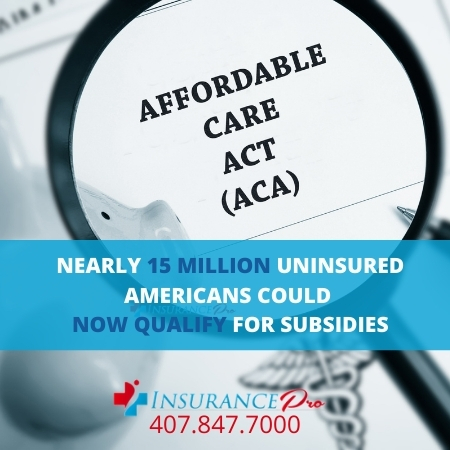Nearly 15 million uninsured Americans could now qualify for subsidies

President Biden signed the sweeping American Rescue Plan Act into law on March 11, 2021. Among its many provisions, the new law includes historic expansions of the Affordable Care Act (ACA) that will significantly improve premium affordability and access to marketplace coverage.
So how does the American Rescue Plan affect health insurance coverage? The American Rescue Plan expands who is eligible for the ACA premium tax credit and increases the amount for certain people already eligible.
This subsidy lowers the monthly health insurance payment or premium.
In previous years, only households with incomes that fell between 100 and 400 percent of the federal poverty level (between $26,500 and $106,000 for a family of four in 2021) qualified for the premium tax credit.
Many people above this “subsidy cliff” didn’t qualify for assistance but were not able to afford full-price premiums. The new law closes this long-standing gap in the ACA.
Many people earned too much to get financial help paying for insurance and too little to be able to afford it,” Gordon said. “Now, the subsidies are based on how much of your income you’d have to pay toward health insurance.”
During 2021 and 2022, individuals and families above the income cutoff can access premium tax credits.
They will also pay no more than 8.5 percent of their household income for a plan purchased through the state or federal marketplaces.
These increased subsidies are designed to increase coverage at the margin and also to let people enroll in higher metal-level plans so they can reduce their cost-sharing obligations,” said Kathy Hempstead, PhD, a senior policy adviser at the Robert Wood Johnson Foundation.
Some people opt for lower-premium plans, but these come with higher deductibles and other out-of-pocket expenses.
The American Rescue Plan bolsters the availability of premium tax credits (PTCs) for millions of lower- and middle-income people and families. Insurance Pro said the increased subsidies will be “significantly more generous” for people whose income is close to 400 percent of the federal poverty level.
In addition:
- People who earn between 100 and 150 percent of the federal poverty level will now have their entire premium covered. In 2020, a family of four at this income level paid around 2 to 4 percent of their household income.
- People who receive unemployment benefits at any point during 2021 may also be eligible for a premium tax credit.
- Nearly 15 million uninsured Americans could now qualify for subsidies if they enroll through the federal or state marketplace, the Department of Health & Human Services estimates.
Insurance Pro explains that if you’re uninsured or bought your own individual health insurance outside the state or federal marketplaces, it’s time to check again to see whether you qualify for a premium tax credit or other subsidy.
A special enrollment period for the marketplaces began Feb. 15 and continues through May 15. During this time, people can sign up for or change their plan.



